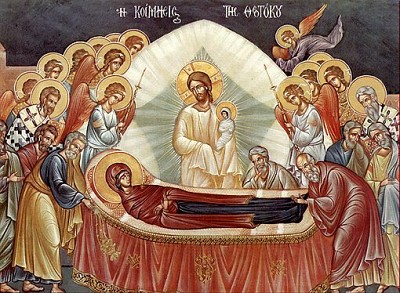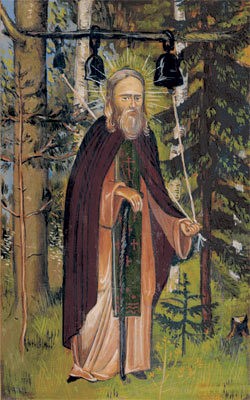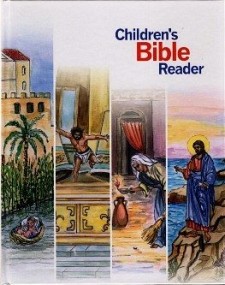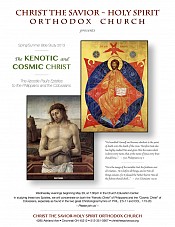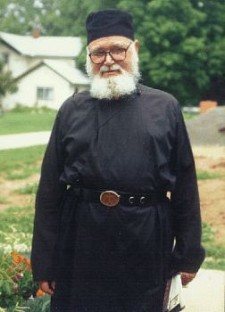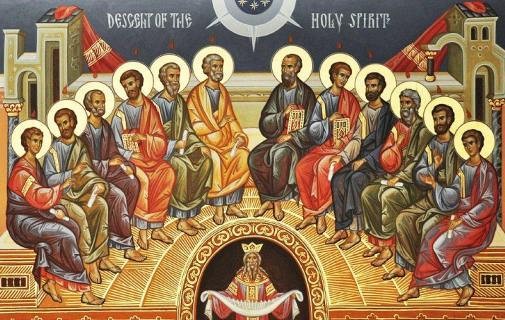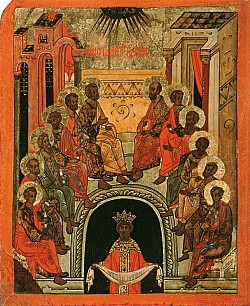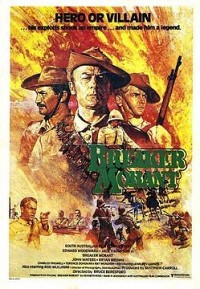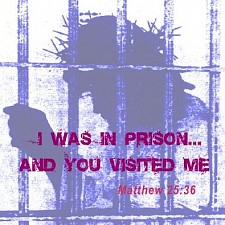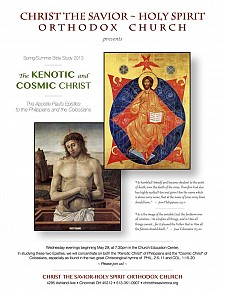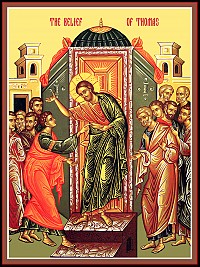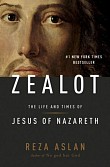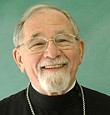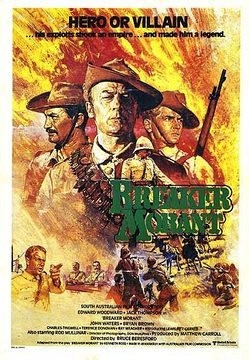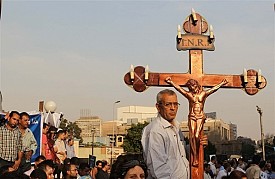Dear Parish Faithful,
Announcements
From yesterday’s Liturgy, simply that Vespers is scheduled for Wednesday evening of this week, at 7:00 p.m. At this service we will commemorate the Beheading of St. John the Baptist. Thursday, August 29, the actual Feast Day of the Beheading, is a strict fast day in honor of the great desert ascetic and prophet John.
Next Sunday, September 1, is the first day of the Church New Year. More on this later in the week.
Fall Class at XU
I begin my Fall semester at Xavier University today. I will now be teaching from 12:00 p.m. – 12:50 on MWF. Therefore, I will leave the church office on those days at around 11:40 a.m. I will return not much after 1:00 p.m. Anyone is welcome to come and sit in on my class at any time. If you like, we can drive over and back together from the church. Just let me know ahead of time.
From Fr. Thomas Hopko
“The threefold experience – the goodness of creation, its corruption by creaturely evil, and its redemption and deification in Christ – illumines all things for those who repent, believe, and are baptized in the Orthodox Church. This experience compels Orthodox believers to acknowledge that human beings are not “autonomous” in their humanity. It forces them to see that “another law” (heteros nomos) is always working in their earthly members. This “other law” is either “the law of the Spirit of life in Christ Jesus” or “the law of sin and death” (Rom. 7:23; 8:2) This threefold experience provides the criterion and frame of reference for all human experiences, and judges them all. It tests a person’s subjective feelings, as well as the claims of science – especially the behavoral sciences, which study humanity in its sinful condition – as to their meaning and purpose for human being and life.
"Our present task is to reflect on how this experience and vision of reality in Christ and the Church may apply to same-sex love and sexual activity and so to love and sexual activity generally, as they are understood and enacted today, especially in North America, Europe and Australia.”
From Christian Faith and Same-Sex Attraction – Eastern Orthodox Reflections, p. 15-16.
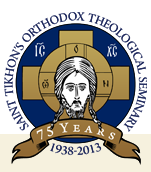
Dear Parish Faithful,
Appeal for Seminarians
August 25 has been chosen as the Sunday to begin collecting donations toward a Midwest diocesan appeal entitled “Support our Seminarians.” Therefore, we will have a basket by the Cross this coming Sunday, and continue to do so for perhaps two more Sundays, taking us up to September 8. That will hopefully allow enough time and notification for everyone to make a donation. When everyone contributes, the donation total is potentially a substantial one. One of our own parishioners, Matthew Joyner, will begin the Fall semester at St. Tikhon’s seminary in just a few more weeks.
Announcing a Birth
It was just last Sunday, that Natalie Wilson – daughter of Brian and Nancy Farison – gave birth to a baby girl, given the name of Lucy Emilia Suzanne. We understand that all is well with mother and daughter. Congratulations to the entire family – and Many Years to the newborn!
A Deacon to Serve on Sunday
If all goes according to plan, Deacon Anthony Payne will serve at the Liturgy with Fr. Steven on Sunday. Deacon Anthony is Di Carter’s brother, so we would like to give both the deacon and his wife Ruth a warm welcome to our parish. We hope that all will go smoothly in the Liturgy!
Scriptural Reading for Sunday’s Liturgy
Epistle: I Cor.
Gospel: MATT. 14:
The homily will combine the Gospel for Sunday and last Sunday’s Gospel, also from MATT. 14.
From Fr. Thomas Hopko
“Sometimes the “image of God” in humans is identified with their spirit, soul, or mind. This is misleading and inaccurate. Humans are made “according to God’s image and likeness” to have divine qualities, and so to be and act as God is and acts, in the wholeness of their humanity. To be and act in a divine manner, humans must first of all be spiritual (pneumatikos, noetikos, logikos). But they must also be psychic and bodily, in male and female forms. The spirit/pneuma (or mind/nous or word/logos) is to govern a person’s soul and body with their emotions and passions. If the “spirit” alone were God’s image in creatures, then bodiless powers, i.e. angels, and not human beings, would be made “according to God’s image and likeness.”
We must note here as well that God is not “a spirit.” God is completely different (totaliter aliter) from creatures in every way. To refer to God as “spirit” is as anthropomorphic as to speak of God’s eyes or hands. In St. John’s Gospel, Jesus says “God is Spirit” to indicate that God is not located anywhere, and must be worshipped “in spirit and truth” (John 4:24). The Lord here is not making a metaphysical statement about God’s being, which, according to the Orthodox church fathers’ interpretation of the Bible, as well as their personal mystical experience, is “beyond being [hyperousios]” and even “beyond divinity [hypertheos]”.”
The Orthodox patristic teaching is that humans, to be truly human, are to be by God’s grace (kata charin theou), good will (kat’ evdokian), action (kat’ energeian), and power (kata dynamin) everything that God Himself is by nature (kat’ ousian). Their creaturely constitution as spiritual, psychic, and bodily beings make this deification possible.”
From Christian Faith and Same-Sex Attraction, p. 19.

Dear Parish Faithful,
Leavetaking of Dormition
For the Leavetaking of the Feast of the Dormition, we will serve Vespers this evening at 7:00 p.m. If you missed the feast earlier, here is an opportunity to absorb some of the beautiful hymnography and venerate the icon of the Theotokos in blessed repose.
Ministry to the Sick and the Elderly
We held a very productive meeting on Monday evening in order to fully reorganize/reconstruct our parish ministry to the sick and the elderly. The point was to better coordinate some overlapping activity in this important ministry within our internal parish life. Based on her recent project for the St. Stephen’s Theological Program, Frances Fowler-Collins will be the over-all chairperson/facilitator of this ministry, working together closely with Fr. Steven and other members of the parish. In an attempt to organize this as effectively as possible, the following “categories” were created that would hopefully cover our main concerns in ministering to all those in need. A head person for each separate ministry below is needed. A couple of the given categories have been filled by the persons whose names are included here. Here is an excellent opportunity, indeed, to practice one of the many forms of Christian stewardship within the context of the parish. Please speak with Frances or Fr. Steven if you would like to volunteer for one of the categories below. To “head” one of these categories does not mean that you would do all of the work singlehandedly. Rather, it means that you will also become a facilitator and assist in organizing a particular task when needed. If you have any further specific questions about any of the categories below, please contact Frances.
Categories:
- Visiting -
- Telephoning -
- Meal Support - Jennifer Haynes
- Transportation -
- Greeting Cards – Anne Taylor & Maria Miller
- Respite care (staying with an infirm person for a few hours so the caregiver(s) can do other things).
It would be wonderful if we had all of these categories filled up by the Church New Year on September 1!
Recent Chrismations (announced August 16)
On Saturday, August 17 and Sunday the 18th we received into the Church Ashley Joyner, Rebekah Glahn and Zac Mockbee, through the Sacraments of Confession, Chrismation and Communion. We always rejoice in receiving new members into the fullness of the Church’s life and faith!
Ashley, however, will not be with us long as Matthew and Ashley will be leaving for St. Tikhon’s seminary by next week as Matthew will begin the new semester there this coming Fall. We wish Matthew a successful career as a seminarian, and hope that their new life there goes well!
Dear Parish Faithful,
The Feast of the Dormition
Just a reminder that we will celebrate the Feast of the Dormition of the Theotokos this evening with the Vesperal Liturgy, beginning at 6:00 p.m. I am eagerly anticipating a church filled with worshippers as we commemorate the falling asleep of the Virgin Mary and her translation to the Kingdom of God. This will end the two-week Dormition fast that has prepared us for the feast.
A further note: I will be off tomorrow, August 15. Please only contact me in case of an “emergency.”
From Fr. Hopko
The Feast of the Dormition clearly raises the issue of death and dying, and what we mean by a “Christian ending to our life.” For the moment, though, here is a challenging paragraph from Fr. Thomas Hopko about some of our own misconceptions – basically our fears – that often find us wandering far from an Orthodox approach to death and dying:
“I believe that the issue of death and dying is in need of serious attention in contemporary Orthodoxy, especially in the West, where most members of the Church seem to be “pagan” before people die and “Platonists” afterwards. By this I mean that they beg the Church to keep people alive, healthy, and happy as long as possible, and then demand that the Church assure them after people die that their immortal souls are “in a better place, basking in heavenly bliss” no matter what they may have done in their earthly lives.” — From Christian Faith and Same-Sex Attractions, p. 89, note 2.
To add a bit more to this, here is a passage from Bp. Ilarion Alfeyev, that reinforces the Christian understanding – and hope – that accompanies us at the moment of death:
“For the non-believing person, death is a catastrophe and a tragedy, a rupture and a break. For the Christian, though, death is neither a catastrophe nor something evil. Death is a “falling asleep,” a temporary condition of separation from the body until the final unification with it. As Isaac the Syrian emphasizes, the sleep of death is short in comparison with the expectant eternity of a person.” — From Orthodox Christianity, Vol. 2, p. 496.
St. Gregory of Nyssa states this Christian hope with clarity:
“By the divine Providence death has been introduced as a dispensation into the nature of man, so that, sin having flowed away at the dissolution of the union of soul and body, man, through the resurrection, might be refashioned, sound, passionless, stainless, and removed from any touch of evil.” — Great Catechetical Oration, 35.
This is precisely why we can call the Feast of the Dormition of the Theotokos, “pascha in the summer!” The Virgin Mary and Theotokos died a “deathless death.” Now we have the opportunity to participate in this mystery in the celebration of this event as nothing less than a Feast. Looking forward to seeing you this evening!
Dear Parish Faithful,
One More Strange and Sad Phenomenon
Someone responded to yesterday’s mailing entitled “It is Strange Isn’t It, and it is Sad!” with the following addition:
Isn't it strange how people stand in line to get into a movie or concert, but just can't get to church till time for the Epistle?
Yes, this one has always struck me as strange –and perhaps a bit sad, too!
Commemorating St. Herman of Alaska
A reminder about the services for St. Herman of Alaska, one of the ten glorified saints of North America, and probably the most well-known and beloved:
This Evening: Great Vespers at 7:00 p.m.
Friday: Divine Liturgy at 9:30 a.m.
From Fr. Thomas Hopko
Repent means to change one’s mind. Believe means to trust what one hears and sees. To be baptized means to die to one’s former ideas and actions and to receive a new identity. Those who repent, believe and are baptized in Christ receive His mind, act by His Spirit and identify with Him in every way. See the first Christian sermon by the Apostle Peter on the day of Pentecost (ACTS 2:14-42). Also ROM. 6:3-14, the epistle reading at the Vesperal Divine Liturgy of Pascha, and at baptisms in the Orthodox Church; EPH. 4:17-32; COL. 3:1-17. From Christian Faith and Same-Sex Attraction – Eastern Orthodox Reflections.
Dear Parish Faithful,
I greet you on the Feast of our Lord’s Transfiguration – a feast that reveals the divine beauty that God has revealed in His Son, Jesus Christ. We “caught” a glimpse of that beauty when the Lord was transfigured on Mt. Tabor. We had a wonderful Vesperal Liturgy yesterday evening, and there were many of the parish faithful in attendance. The Liturgy ended with the joyous blessing of everyone’s fruit basket and the sharing of that fruit before we departed in peace. The Feast will continue through the weekend, as we enjoy the vision of the Lord shining brighter than the sun.
I am announcing a change in our liturgical schedule: For St. Herman of Alaska, we will serve Great Vespers on Thursday evening at 7:00 p.m. and the Divine Liturgy on Friday morning at 9:30 a.m. I realize that this is a work day, but if we have any choir members that may be available, it would be greatly appreciated if you would come and sing in honor and memory of one of our great American saints.
Fr. Steven
Dear Parish Faithful,
A Full Liturgical Week Approaching
We have a glorious Feast and a wonderful commemoration of a saint that occur during the two-week Dormition Fast. The Feast of our Lord’s Transfiguration is on August 6. We will celebrate a Vesperal Liturgy on Monday evening, August 5, at 6:00 p.m. Remember to bring your fruit baskets for blessing at the end of the Liturgy. We commemorate the glorification/canonization of our beloved Fr. Herman of Alaska on August 9. We will serve the Vesperal Liturgy for this commemoration on Thursday evening, August 8, at 6:00 p.m. Mark your calendars!
The Parish Needs Your Assistance
Last Sunday, Presvytera Deborah made a brief presentation outlining a plan for re-organizing our Sunday Refreshment/Coffee Hour list. The goal is to reduce each household’s turn for set-up and clean-up to once a year. The food will be provided by the parish. We still need ten households/units to take a place on the list so that each Sunday is covered. Please give this your consideration and speak with Presvytera Deborah about joining this once-a-year ministry. Your contribution is much needed and would be greatly appreciated.
New Copies of Children’s Bible
Last week I described and highly recommended an Orthodox version of a Bible for children. We are in the process of getting eight copies into the bookstore. They have not yet arrived, but there is a review copy that is available if you would like to look through it. This would also be a wonderful gift for a godchild and/or grandchild that you may want to think about. The Bible will sell for $15.00.
There are also three copies remaining of a fine Prayer Book for Children compiled and printed by the Holy Dormition Monastery in Michigan. A wonderful tool for helping your child to pray with regularity and to learn to pray with the “mind of the Church.” There are also the following prayers that would be of further help on a daily basis: “First Prayer of Small Children;” “Second Prayer of Small Children;” “Daily Prayer of a Child;” “Prayer of a Child for His Parents;” “Prayer for Brothers and Sisters.” The Prayer Book sells for $6.00.
The Lord’s Day Liturgical Cycle – Sixth Sunday After Pentecost
Saturday – Great Vespers at 6:00 p.m.
Sunday – Hours at 9:10 a.m. & Divine Liturgy at 9:30 a.m.
Scripture Readings for Sunday’s Liturgy
Epistle - ROM. 12:6-14
Gospel – MATT. 9:1-8
From Fr. Thomas Hopko
“In Orthodox Christianity, vision (theoria) and experience (praxis) are organically united and interconnected. They may be abstractly distinguished, but they cannot be existentially separated. The conviction that human vision and experience have been distorted and corrupted by sin, and, as such, require divine purification and restoration, is, as we have constantly repeated here, an essential part of the vision and experience of Christianity as understood, taught, and lived in the Orthodox Church. Because this is so, Orthodox believers have always been, and must always be, both radically respectful of human experience and radically suspicious of it. They are obliged to observe human experiences carefully and to assess them honestly. They accomplish this delicate task in the light of their sacramental and spiritual experience in the believing community.”
From Christian Faith and Same-Sex Attraction – Eastern Orthodox Reflections, p. 92.
Dear Parish Faithful,
Dormition Fast Approaching
The arrival of the two-week Dormition Fast on Wednesday, August 1, is always the “perfect” antidote to that spiritual summer drought that we could be experiencing right about this time of the year (written about in the Monday Morning Meditation from earlier in the week). A fast implies vigilance – and not simply about what we eat or drink. To be spiritually vigilant is to rediscover our commitment to the Gospel command to love both God and neighbor with all our soul, mind, body, and strength. This fast, then, could revive our drooping spirits if that is what we may be suffering from at the moment. If that is not a current concern, then the fast can simply sustain our relationship with God and neighbor as it leads us up the beautiful Feast of the Dormition of the Theotokos. Either way, or any way, we should prepare ourselves for the spiritual effort – primarily based on prayer, fasting and almsgiving - that a fasting season implies, embracing it with thanksgiving and heartfelt commitment.
Unfortunately, I was premature in tentatively announcing an Open House that Presvytera and I were going to host in honor of the Dormition Feast on Sunday, August 18. Something has come up and we will have to postpone that celebration for another time. I apologize for any confusion.
A Couple of New Additions to the Bookstore
I brought back two additions to the bookstore from the monastery: One is Fr. Hopko’s excellent book on “same-sex attraction.” Fr. Hopko gives an excellent, balanced and pastorally-driven presentation and assessment of the Orthodox theological and spiritual principles behind the Church’s understanding of same-sex attraction. There are also three copies of a wonderful Prayer Book for Children that any reading child could use as his or her own. A good tool for teaching a child to pray even more effectively and perhaps more independently. There are only two copies of Fr. Hopko’s book; and three of the prayer books.
Finally – A Good Orthodox Children’s Bible!
Children’s Bibles can be very helpful in introducing the Sacred Scriptures to our children/grandchildren/godchildren, in that they offer simplified texts that make the Bible more accessible to young and impressionable minds. I have seen and read some excellent editions – and some that are rather poor. My main concern at times is not with the text itself but with the pictures/illustrations. Often the biblical characters – from Adam and Eve to Christ Himself – are presented in an almost cartoonish manner. This only undermines the text by putting it on the level of a series of childish caricatures that strip the text of its inherent depth. I would avoid such versions. As Orthodox Christians, we understand the full value of images, and of how words and images work together so effectively. We know this through our sacred iconography.
There is now available – and actually has been since 2006 – an English language edition of a children’s Bible originally written in Greek. This children’s Bible has wonderfully-conceived iconographic drawings that make this a beautiful Bible for children. Your child is thus visually absorbing the basic style of Orthodox iconography as he/she is hearing or reading the text. This edition is entitled, simply, Children’s Bible Reader, printed in association with the American Bible Society.
Presvytera Deborah and I have been using it with our own grandchildren and they seem to enjoy it very much. The translation of the texts reads well and this edition is pretty thorough, with about eighty Old Testament stories and about ninety from the New Testament. Each story is only about one-two pages long, but each episode is intelligently condensed and the main points are emphasized. This Bible is therefore around three hundred pages in length. There are also a series of helpful maps placed at the back of the book. I would think that the envisioned readership would be around five-twelve year old children; but even younger children could have it effectively read or further paraphrased for them.
Besides amazon.com, I believe that Light-n-Life – an Orthodox bookstore - carries this version.
ADDED JULY 29: The Children's Bible Reader is also available online, with narration, from the Greek Archdiocese website.
I would highly recommend this version for all Orthodox families!
Working Out a New Post-Liturgy Refreshment Hour System
Presvytera Deborah will briefly present a new plan for a more effective Refreshment Hour system after the Liturgy this Sunday. This has been approved by the Parish Council and we would like to implement it by the beginning of the Church year on September 1. To make it even more effective, we need some more volunteers from within the parish who would take this ministry on. With this new plan, that would only entail one Sunday for the entire year. That would be a commitment greatly appreciated by the entire parish!
Scriptural Reading for Sunday’s Liturgy
Epistle: ROM. 10:1-10
Gospel: MATT. 8:28-9:1
Dear Parish Faithful,
Monastery Pilgrimage
We will be leaving for the Transfiguration Monastery on Tuesday, July 23 and returning on Wednesday, July 24. Would anyone like to send something to the monastery by way of support; or directly to Mother Paula – perhaps a card, note, small gift, etc.? If so, please get any such item to me by Sunday if possible.
Final Bible Study Session: Wed, July 31
We will put off our last session until Wednesday, July 31, because of the monastery pilgrimage.
Post-Liturgy Refreshment Hour Changes
The following is a suggestion/proposal put together by Presvytera Deborah and agreed upon by the Parish Council for the future of our post-Liturgy refreshments, etc. Please read through it carefully. Our current system is no longer viable, because the responsibility and cost for the “Coffee Hour” is being assumed by too few of our parish membership. The following plan is meant to address and solve our current dilemma.
The parish council has approved a new approach to the coffee hour, which we hope to put in place for the beginning of the new church year, September 1, 2013. The goal for our new plan is to have a once a year responsibility for the coffee hour providers. Our new plan covers 46 Sundays of coffee hour (no coffee hour on: Pascha, St. Nicholas Charity Dinner Sunday, St. Katherine Meat Fare Sunday, St. Katherine Ethnic Dinner Sunday, Dormition Open House at the Kostoff’s and the Parish Picnic Sunday). For the 46 Sundays, the parish will provide the following items: 6 dozen pre-cut bagels, spreads, coffee and 3 drinks. It is felt that the number of individuals needed for preparation and clean up can now be reduced to 2. We still need approximately 16 more units of 2 (or about 32 more parish members) in order for everyone involved to be on the list only once a year. Therefore, I am appealing to the parish to help us meet this goal by emailing either Fr. Steven or myself if you could help with this important parish ministry no later than August 15. — Deborah C. Kostoff
Scriptural Reading for Sunday’s Liturgy
Epistle: ROM. 6:18-23
Gospel: MATT. 8:5-13
The homily will combine commentary on the Gospel reading and COL. 3:11. Can you detect the connection?
Celebrating the Dormition
Tentatively, Presvytera Deborah and I are planning to host an Open House celebration on Sunday, August 18, in honor of the Dormition of the Theotokos – something like “Pascha in the summer” as this feast has been called. Our plan is to begin right after the Liturgy. We are hoping that you will set aside that date and join us at our home. Details to follow.
Dear Parish Faithful,
Film Festival Cancelled
With not much positive response, we are going to cancel this evening’s scheduled films here at the church. Perhaps we will try again in August.
Final Announcement for Pilgrimage
Our monastery pilgrimage is scheduled for Tuesday-Wednesday, July 23-24. There is still room at the monastery if you would like to join us. I will have to give the monastery an exact count by Monday morning, so please inform me by the weekend if you would like to make the trip. Again, we are going to the Monastery of the Holy Transfiguration in Ellwood City, PA. This will give us the opportunity to visit Mother Paula, who was once part of our parish.
In Preparation
Before you know it, it will be August, and this is a month – unlike July – with two of the Church’s great Feast Days. Looking ahead, you can therefore mark these dates on your calendar and make a point of celebrating these feasts when they arrive. We celebrate the Transfiguration of the Lord on August 6; and the Dormition of the Theotokos on August 15. As of now, we will most probably serve a Vesperal Liturgy for both feasts. That will mean on Monday evening, August 5, for the Transfiguration; and Wednesday evening, August 14, for the Dormition. The Dormition, of course, is preceded by a two week fast, August 1-14.
Scripture Readings for Sunday’s Liturgy
Epistle: ROM. 5:1-10
Gospel: MATT. 6:22-33
Dear Parish Faithful,
Schedule for the Upcoming Week
For those who were not at the Liturgy yesterday, here is the schedule for the upcoming week in our parish life:
This evening: Catechetical Class at 7:30 p.m.
Wednesday – Bible Study: COL. 2 at 7:30 p.m.
Friday – Film Festival here at the church beginning at 7:00 p.m. For the children (ages 4 – 10): “Spy Kids.” Still working out the film for the adults! More details to follow soon.
Scroll down for recent news updates...
Dear Parish Faithful,
Fr. Roman Braga is Gravely Ill
Orthodox America has been blessed for many years with the presence here of a genuine Orthodox elder, Fr. Roman Braga, of the Holy Dormition Monastery in Rives Junction, MI. Fr. Roman has been a spiritual guide to countless members of the Church, and is himself a confessor who suffered for his faith in a prison camp under communist rule in his native Romania. He has just been diagnosed with terminal cancer, and will receive palliative care from a professional hospice doctor from the University of Michigan. I know that some of you have met him on one of our pilgrimage visits to the monastery. Mother Gabriella asks that we keep him in our prayers.
Feast of Sts. Peter & Paul
The services for the Feast are:
This evening, Fri. June 28: Great Vespers at 7:00 p.m.
Saturday, June 29: Divine Liturgy at 9:30 a.m.
A Day Off
We will have some visitors staying with us from California next week. Therefore, I will take a “day off” on Monday. Tuesday is my regular day off, so I will return to the office on Wednesday morning. Please contact me for any emergencies.
Dear Parish Faithful,
The Week of Pentecost and the Feast of Sts. Peter & Paul
The Monday after Pentecost – also known as Trinity Sunday - is referred to as the Day of the Holy Spirit. This focus is based on the Pentecostal outpouring of the Holy Spirit that is narrated in ACTS 2 by St. Luke the Evangelist. The Holy Spirit is the mysterious “Third Person” of the Holy Trinity, Who is “everywhere present and fillest all things.” We were blessed with a splendid celebration of Pentecost yesterday at the Liturgy and the Vespers of Pentecost that followed. The church was quite full and there were many more communicants than usual, or so it seemed. It was a long morning, no doubt, but for those who persevered, hopefully one that was spiritually fruitful – certainly a gift of the Holy Spirit! We are now in the Week of Pentecost. And, like Bright Week, this is a “fast-free week” that is meant to emphasize the greatness of the Feast.
We also have the somewhat rare experience this year of eliminating the Sts. Peter & Paul fast. (Visible or loud expressions of joy should be considered inappropriate). This is due to the very late date of Pascha this year; because the length of the Sts. Peter & Paul fast is ultimately dependent upon the date of Pascha. The Feast of these two apostles is always on the fixed day of June 29. The fast begins eight days after Pentecost. Pentecost, in turn, is determined by the date of Pascha. According to these calculations, the Sts. Peter & Paul fast would begin next Monday – but that would be after June 29! In fact, we have the very rare experience this year of the Feast of Sts. Peter & Paul coming at the end of the fast-free Week of Pentecost. For June 29 is next Saturday.
Therefore, the schedule of services and events this week is as follows:
Wednesday – Vespers at 7:00 p.m.
Bible Study at 7:45 p.m. (PHIL. 4)
Friday – Great Vespers at 7:00 p.m.
Saturday – Divine Liturgy for Sts. Peter & Paul at 9:30 a.m.
Great Vespers at 6:00 p.m.
Monastery Pilgrimage
Our annual monastery pilgrimage this year will take us to Ellwood City and the Transfiguration Monastery, home of Mother Paula (former parishioner Vicki Bellas). The trip is scheduled for Tuesday and Wednesday, July 23-24. Please let me know if you would like to make the trip.
Summer Has Arrived
I believe that last Friday was the official beginning of Summer – and it’s starting to feel like it. The heat, it turn, leads to attempts to escape its grip. Just a reminder that short pants – with the exception of small children – are not allowed in church for any particular service or event. Also, please refrain from wearing any logo-expressive T shirts promoting a baseball team, rock group, “message,” etc. There is a point at which casual can become “too casual.”
Dear Parish Faithful,
“For Paul … was hastening to be at Jerusalem, if possible, on the day of Pentecost.” (ACTS 20:16)
I believe that all members of our parish should try and imitate the zeal of the Apostle Paul by making sure that all effort is expended to be present for the great Feast of Pentecost this coming Sunday. Pentecost Sunday is not like an “ordinary” Sunday (since Sunday is the Lord’s Day, there essentially is no such thing as an “ordinary” Sunday; but that is a theme for another day). There is no place to be but in church for the Feast. Pentecost is the culmination of the paschal mystery that extends back to the Crucifixion and Resurrection of the Lord Jesus Christ. It is the Day of the outpouring of the Holy Spirit upon the Church of the New Testament. For the first time in fifty days, we will sing “O, Heavenly King,” as we pray for the descent of the Holy Spirit upon us, as the Spirit descended upon the disciples in the Upper Room on the first Christian Pentecost. We will also “bend the knee” for the first time in fifty days, as we offer up the specially-appointed prayers of the Vespers of Pentecost, to be served immediately following the Divine Liturgy.
Actually, the Feast begins at the festal Great Vespers on Saturday evening at 6:00 p.m. It is at this service that we will begin our celebration of Pentecost. A near-empty church, with a three-person choir is hardly a “festal” celebration worthy of the Great Feast of Pentecost. A near-empty church and a three-person choir would reveal a sad but unavoidable disconnect between our claim to be a parish of the “One, Holy, Catholic and Apostolic Church” and the reality of our parish life. Perhaps the festal Great Vespers of Pentecost can snap us out of our post-paschal-Sunday-morning-only slump that annually descends upon the church with a dreary regularity. God always blesses us with new beginnings, and Pentecost is one such glorious opportunity to renew our spirits and (re)turn to the Lord.
Let us hasten, as did the Apostle Paul, to the church for the full celebration of Pentecost!
Saturday — Great Vespers at 6:00 p.m.
Sunday — Hours at 9:10 a.m.
Divine Liturgy at 9:30 a.m.
Vespers of Pentecost immediately following the Liturgy
Scriptural Readings at the Liturgy for Pentecost:
Epistle: ACTS 2:1-11
Gospel: JN. 7:37-52; 8:12
Visit our Pentecost Festal Resource Page...
Dear Parish Faithful,
Home Sweet Home
It is good to be back home and in the parish – basically in one piece – after a very “interesting” experience. The following is a reminder of the events and services of the upcoming weekend:
Friday Evening
Film Festival showing of “Babe” for our three-ten yr. olds; and “Breaker Morant” for our young adults, true adults, old adults, etc. (All adults are free to watch “Babe” if they so desire). Each film begins at 7:00 p.m. in the church. (Not yet sure of the set-up, but we are working on that).
It would still help if you contacted Terrie Sauer or Fr. Steven if you plan on attending this evening.
More info on our Summer Film Festival News Page...
Saturday
Great Vespers at 6:00 p.m.
Sunday
Hours at 9:10 a.m.
Divine Liturgy at 9:30 a.m.
We will use all of the festal material of the Ascension at the Liturgy on Sunday.
Scriptural Readings:
ACTS 20:16-18, 28-36
JOHN 17:1-13
Altar Boy Training
I have already spoken with a few of our new potential altar boys. This Sunday, I was hoping to begin a bit of the initial training following the Liturgy. Therefore, all of our young boys who would like to start serving as altar boys in the near future are invited to a short training session during the refreshment hour on Sunday led by Fr. Steven.
Bible Study to Resume
We will resume this year’s Spring/Summer Bible Study next Wednesday at 7:30 p.m. We will be reading and discussing PHIL. 3 next week.
Recovering From Surgery
Ken Blendea is recovering from knee replacement surgery and should be home in the next day or two. We wish him a speedy recovery!
Dear Parish Faithful,
CHRIST IS RISEN!
INDEED HE IS RISEN!
“As many as have been baptized”
Tomorrow morning, Crosby Koenig, son of Chris & Kisa Koenig and grandson of Karen & Wayne Krueger, will be baptized in the church. The service begins at 10:00 a.m.
Absent from the parish
As announced last Sunday, I will be away from Monday, June 10 – Thursday, June 13.
Friday Film Festival
As announced a few weeks earlier, we are organizing a summer Film Festival in the church, for both children and adults(!) This way, parents that bring their children can also stay and enjoy a good film, and any other adult members of the parish are strongly encouraged to join us. The plan is to choose three films for each age group and show them on the second Friday of June, July and August. Therefore, we will begin next Friday, June 14, at 7:00 p.m. The intention is to choose films that have a moral/ethical dimension to them, as well as films that are artistically well-done.
Children’s (suggested age group, 3-10) Film: Babe. A great favorite among children (and adults) that with humor and pathos – and from within the world of talking and thinking animals – exemplifies the beatitude: “Blessed are the meek, for they shall inherit the earth.”
Adult Film: Breaker Morant. An intense and well-acted drama, summarized as follows: “Based on a true story, Breaker Morant is the tale of three soldiers who are court-martialed at the end of the Boer War. When one of their comrades is ambushed and killed, three soldiers seek revenge and kill a Boer soldier. The act of murder and the mysterious disappearance of a German missionary leads to the arrest of the three men. In one of the most controversial court-martials in military history, they are defended by Major Thomas, a small town Australian solicitor who was only given one day to prepare the case.”
We do believe, however, that a commitment of ten children is needed to make this a worthwhile “group event” that further promotes socializing and friendship among our children. If you plan on attending, please contact Terrie Sauer: becauseimthemom@gmail.com or me.
Visit, bookmark and share our new Summer Film Festival Page for up to date information on the first CTSHS Film Festival!
Scripture Reading at Sunday’s Liturgy
ACTS 16:16-34
JOHN 9:1-38
Dear Parish Faithful,
CHRIST IS RISEN! INDEED HE IS RISEN!
Upcoming Week
For those who missed the announcements following the Liturgy yesterday:
- This evening – Catechetical Class at 7:30 p.m.
- Tuesday – Sisterhood gathering at the home of Florentina Popescu at 7:00 p.m. Please contact Florentina if you plan on attending.
- Wednesday – Bible Study (PHIL. 2) at 7:30 p.m.
- Saturday – Baptism of Crosby Koenig at 10:00 a.m.
- I will be away from the parish next week from June 10 – 13.
Prison Ministry Awareness Sunday
Sunday, June 9, has been designated Prison Ministry Awareness Sunday by the Assembly of North American Bishops. Please read the article to be found at the provided link: http://oca.org/news/headline-news/june-9-designated-prison-ministry-awareness-sunday
Within our own parish, we have an ongoing prison ministry at the Warren Correctional Institution in Lebanon, OH. This coming weekend, three of our parishioners – Terry Morgan, Peter Carter and Andrew Herbst - will be participating in the very intense Kairos Prison Ministry #10 program, from Thursday – Sunday. Please keep them and this ministry in your prayers. In addition, the parish council voted on Saturday to sponsor two of the prisoners upon request. And, this last Saturday, volunteers from the parish helped to bake over 1,000 cookies that will be distributed at this coming weekend’s Kairos program. We would like to thank all of our bakers and helpers.
Fr. Steven
Dear Parish Faithful,
CHRIST IS RISEN! INDEED HE IS RISEN!
Building Up the Body of Christ
There will be a baptismal Liturgy this Sunday beginning at 9:30 a.m. We will be baptizing Silas Kassen. The sponsors will be Paul and Kris Gansle. We will look forward to adding a new member to the Body of Christ!
Assisting Tornado Victims
As announced earlier, we will have a basket by the Cross in order to collect everyone’s donation toward offering relief to the victims of the recent tornados that hit Oklahoma with deadly ferocity earlier in the week. There are very good and capable agencies to work through right here in Cincinnati; but for the sake of supporting our own equally-effective IOCC which also helps in domestic tragedies, we will send in our donation through them. You can check the IOCC website, for further information about tornado victim relief in Oklahoma. When everyone contributes – from large to small donations – we end up making a sizeable contribution.
Did You Miss Confession?
Most of the parish faithful made it to Confession before Holy Week and Pascha, but some somehow managed not to. Periodic confession of sins is essential for approaching the chalice. Do not brush off a missed opportunity to confess your sins; but rather bear in mind this essential part of your life in the Church and contact me for a good day and time to confess.
Sponsored Hogar Teen to Study in Russia
Over the past couple of years, our sponsorship of a “child” at the Hogar has been directed to one of the teens who has now graduated from High School. Her name is Elisa Valencia. She is a bright young woman and a gifted student. As such, she has been chosen to travel abroad and study in Russia for the next few years. Madre Ines has worked this out through her connections with the Russian ambassador to Guatemala. Elisa will leave sometime in late August or early September. If anyone would like to join presvytera Deborah and me in sending her some extra funds as a parting gift for her travels and living expenses abroad, please contact me. This is not a parish appeal, but simply an update and a note directed to anyone who may want to add some further financial support.
Dear Parish Faithful,
CHRIST IS RISEN!
INDEED HE IS RISEN!
Fr. Steven Will be Travelling
A final reminder that I will be travelling this weekend, and thus will not be here for Sunday’s Liturgy. I should return by late afternoon on Monday. Fr. Zachariah Trent is scheduled to be here and serve in my place. There will not be a Great Vespers service on Saturday. As always, the Hours at 9:10 a.m. and the Divine Liturgy at 9:30 a.m. on Sunday morning.
Friday Film Festival
We are tentatively discussing the possibility of having a film on a Friday evening for the summer months of June, July, and August. This was discussed within the context of a Church School activity, but we now believe that this can be a parish activity and include everyone. We are looking into the possibility of having an age-appropriate film for “younger children” in one area of the downstairs Education Center; and another film for the older students and adults in another area. An Orthodox multiplex! As of now, we are aiming for the second Friday of each month, but that will be something to announce as our plans and organization develops.
Spring/Summer Bible Study to Begin Soon
This year’s Bible Study is now scheduled to begin on Wednesday evening, May 29, at around 7:30 p.m. in the Education Center. We will be studying the Apostle Paul’s Epistles to the Philippians and Colossians. Our flier is now posted on our Adult Education page with full details.
Monastery Pilgrimage
This year’s annual pilgrimage to an Orthodox monastery will be to the Holy Transfiguration in Ellwood City, PA. That, of course, is where our own Mother Paula is living as a nun. The dates are Tuesday, July 23 – Wednesday, July 24. If you have never been to an Orthodox monastery, here is an excellent opportunity by making a short visit that will introduce you to one of the great vocations within the ongoing life of the Church through the centuries. Please get back with me if you would like to make the trip as scheduled.
Dear Parish Faithful,
CHRIST IS RISEN! INDEED HE IS RISEN!
Bright Friday Vespers
Our next service is scheduled for Friday at 6:00 p.m. This will be the Vesper of Bright Saturday, but served on Friday evening. This will be the last of the Bright Week services and it retains the full paschal liturgical expression unique to Bright Week. The service begins the evening of the Church School Bright Week party to follow in the Church Hall.
The Great Vespers for Thomas Sunday is, of course, scheduled for Saturday evening at 6:00 p.m.
Upcoming Baptisms
Over the course of the next five weekends, we will have three Baptisms here in our parish:
Sunday, May 12 – Zachary Wesner
Sunday, May 26 – Silas Kassen
Saturday, June 8 – Crosby Koenig (grandson of Wayne & Karen Krueger)
Visiting Priest and Celebrant
I will be out-of-town the weekend of May 18-20. Fr. Zechariah Trent from Indianapolis will serve the Liturgy in my place on Sunday, May 19. There will not be a Vespers service on Saturday, May 18.
Upcoming Bible Study
This year’s Spring/Summer Bible Study will tentatively begin on Wednesday, May 29. The Bible Study is entitled “The Kenotic and Cosmic Christ” – The Apostle Paul’s Epistles to the Philippians & Colossians. More details and a flier will follow. I will be willing to repeat the Bible Study on Thursday mornings at 10:00 a.m. if a minimum of six participants will commit to attending.
The Sundays of the Pentecostarion
Beginning on the Fourth Sunday of Pascha, May 26, the homilies will focus on the Acts of the Apostles. This book, of course, is the prescribed reading throughout the Paschal – Pentecostal season of the Church’s liturgical life. (I will focus on the Gospel this coming Sunday, and I will not be here on May 19). These homilies will continue through the Sunday of Pentecost.
Refuting Reza Aslan's 'Zealot' - A critique of the latest "Real Jesus" book, featuring the writings of revered Orthodox Christian scholars and historians Fr. Georges Florovsky, Fr Alexander Schmemann, and Prof. Veselin Kesich. Read in browser or download in PDF format. Originally published on the OCA website.
FR THOMAS HOPKO HONORED - Longtime friend of Christ the Savior-Holy Spirit, and beloved priest, teacher, and author, Protopresbyter Thomas Hopko was gven a rare honor on the 50th anniversary of his ordination to the Holy Priesthood during the recent Archdiocese of Canada's Assembly. Article and photos here.
Longtime friend of Christ the Savior-Holy Spirit, and beloved priest, teacher, and author, Protopresvyter Thomas Hopko was gven a rare honor during the recent Archdiocese of Canada's Assembly. —AXIOS! Father Thomas!
Fr Thomas Hopko honored during Canadian Assembly
GATINEAU, QUEBEC [OCA]
Protopresbyter Thomas Hopko, Dean Emeritus of Saint Vladimir’s Seminary, Yonkers, NY, was presented with the rarely awarded Saint Innocent Award, Gold Class, by His Beatitude, Metropolitan TIkhon on behalf of the Holy Synod of Bishops and the Orthodox Church in America.
The award, which was presented on August 24, 2013—the 50th anniversary of Father Thomas’ ordination to the priesthood by His Eminence, the late Archbishop [later Metropolitan] Ireney—was given in recognition of Father Thomas’ outstanding service as a priest, teacher, seminary dean and writer who has had a deep influence for good on the life of the Orthodox Church in America. It was presented at the closing banquet of the Archdiocese of Canada’s Assembly, titled “Faithful Stewardship: Our Words, Commitments and Actions,” in the presence of His Grace, Bishop Irénée of Quebec City.
Read the full article on the OCA website...

Dear Parish Faithful,
“The Spirit of the Lord is upon me … to proclaim the acceptable year of the Lord.”
—(LK. 4:18-19)
As the Church New Year Approaches …
The Church New Year begins on September 1, and that will be on a Sunday this year – in fact, this coming Sunday. In preparation for this new beginning, I would like to offer a brief summary of various parish programs that will begin on or around that date – some of them reflecting some new changes and others that are a traditional part of our parish. Every program mentioned here can easily be elaborated on, and that will be done in due course. However, my purpose here is to convey our “life in the parish” in an over-all manner that will provide everyone with a recent update and reminder as we prepare to enter the Church New Year.
Reorganized Refreshment/Coffee Hour
The first attachment that you will find here is the list that reflects a careful effort to reorganize our coffee hour so as to achieve greater balance and fairness in distributing the time and effort that goes into preparing for any given Sunday. As announced in the church, the goal is to reduce to one the times during the year that any given household is committed to the preparation and clean-up on Sundays. With a further goal being simplicity, the parish will now provide the food and drink so that a given household is relieved of a good deal of expense and timely effort in providing each Sunday’s hospitality and fellowship. Please refer to the attachment for your scheduled Sunday. Also, directions are provided there for the set-up. A further goal that we have is to provide good, healthy food. There are still five Sundays that are blank. So, we are still looking for volunteers to fill those gaps. Please contact Presvytera Deborah if you would like to take on one of those Sundays.
Reorganized Ministry to the Ill & Aged
A separate letter was sent out just last week outlining the changes in how the parish will now embrace this essential ministry. Hopefully, everyone read that letter carefully. To simply repeat: Frances Fowler-Collins is the chairperson of this ministry. So far, only two persons have responded with an offer to assist in one of the many categories that make up this over-all ministry. Please contact Frances or Fr. Steven if you would like to take on a role.
Stewardship Ministry
Our Stewardship ministry met recently to chart out some plans for 2014 and the upcoming “pledge drive” for 2014. As of now, we have planned at least two post-Liturgy discussions on September 22 & 29 to further discuss the ongoing study of Christian stewardship being done by our committee. The committee’s goal is to pass out the pledge forms for 2014 by October 6 and set a goal for their completion and return to our treasurer by November 24, the Sunday before Thanksgiving Day.
Over-all Parish Ministries
Also, for your convenience, the list of all of the parish ministries with a brief description of each and the chairperson of each is attached to this letter. Please take a look at this list and remind yourself of your ministry’s purpose in the over-all life of the parish. I have tried to update the list as well as possible, but I am certain to have something or other. If, for some reason, you are no longer able to chair that particular ministry, let me know so that we can find a suitable replacement in the near future. Or, if a particular ministry is one that you think your talents are best suited for, please contact me so that you can become a part of that parish work.
Church School 2013-2014
Our Church School program will begin on Sunday, September 15 with a kind of orientation session. The curriculum will begin on Sunday, September 22. A separate mailing with the class lists will be sent out to parents very soon. To mention here, though, there are 84 names on the class list! The Parish Picnic is also scheduled for Sunday, September 15. We are hoping to take a group photo of the entire parish on that day also. So your presence is made even a bit more important, for we want everyone to be in that photo.
The Church New Year is a time of renewal and regeneration following the summer. It is also a time to re-commit ourselves to the work of bringing the Gospel to life in our community – a community entrusted to us by God for our own salvation and that of others who are within our reach. This is a sacred task that we should all rejoice in!

Summer Film Festival
SESSION I: Friday, June 14 - 7:00pm
As announced a few weeks earlier, we are organizing a summer Film Festival in the church, for both children and adults(!). This way, parents that bring their children can also stay and enjoy a good film, and any other adult members of the parish are strongly encouraged to join us. The plan is to choose three films for each age group and show them on the second Friday of June, July and August. Therefore, we will begin next Friday, June 14, at 7:00 p.m. The intention is to choose films that have a moral/ethical dimension to them, as well as films that are artistically well-done.
Children’s (suggested age group, 3-10) Film: Babe. A great favorite among children (and adults) that with humor and pathos – and from within the world of talking and thinking animals – exemplifies the beatitude: “Blessed are the meek, for they shall inherit the earth.”
Adult Film: Breaker Morant. An intense and well-acted drama, summarized as follows:
“Based on a true story, Breaker Morant is the tale of three soldiers who are court-martialed at the end of the Boer War. When one of their comrades is ambushed and killed, three soldiers seek revenge and kill a Boer soldier. The act of murder and the mysterious disappearance of a German missionary leads to the arrest of the three men. In one of the most controversial court-martials in military history, they are defended by Major Thomas, a small town Australian solicitor who was only given one day to prepare the case.”
We do believe, however, that a commitment of ten children is needed to make this a worthwhile “group event” that further promotes socializing and friendship among our children. If you plan on attending, please contact Terrie Sauer or me.
Fr. Steven
PHOTOS ADDED TO GALLERY - A whole new slide show from our Church School's Bright Friday Party has been posted on our Photo Gallery page, joining the dozens of photos from Sunday of Orthodoxy, Fr John Behr's visit to the parish, and Holy Week-Pascha. Special appreciation to Paul Gansle and Mickey Callender for faithfully archiving the life of the parish!
Dear Parish Faithful,
A New Parish Member
On Wednesday, Michael and Ashley Shehata welcomed their new baby girl into the world. Our congratulations to them and to Wagih and Sonia! Mother and child are doing well. Her name is Victoria. Many Years!
Holy Synod Calls for Prayers in Wake of Egyptian Crisis
The Holy Synod of Bishops has issued a letter of deep pastoral concern about the chaotic and deadly events occurring to this day in Egypt. The Coptic community has suffered greatly at the hands of Islamist terrorists, and churches have been destroyed and many of the faithful attacked. But the letter is a call to prayer “on behalf of all people of goodwill, Christian and non-Christian alike.” The entire letter can be found on the homepage of the OCA: www.oca.org. A special petition has been written for use in our parish churches.
Seminary Appeal Continues
The basket to collect donations for our current diocesan seminary appeal will be by the Cross following the Liturgy this Sunday.
Travellers: Have You Found a Church?
As this is Labor Day weekend, I am assuming that some parishioners will be away from Cincinnati, taking advantage of the three-day weekend. I urge you to make an effort to be near a local Orthodox parish on Sunday, so that you can also attend the Divine Liturgy on the day of the Church New Year. At times this is not convenient, but it is, nevertheless, a sign of commitment.
Scriptural Readings for Sunday’s Liturgy
Epistles: I COR. 4:9-16 & I TIM. 2:1-7 (New Year)
Gospels: MATT. 17:14-23 & LK. 4:16-22 (New Year)
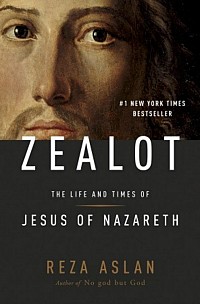
- Originally published on the OCA website.
- Download and read in PDF format.
Refuting Reza Aslan’s “Zealot: The Life and Times of Jesus of Nazareth”
Of late, yet another “study” purporting to reveal the “real” historical Jesus has been receiving more than its share of attention.
The top-of-the-charts Zealot: The Life and Times of Jesus of Nazareth by Reza Aslan is likely to make the rounds amongst Orthodox Christians. While most of our faithful may not actually read the book, many are likely to hear about it via a recent FOX network interview with the author and the mounting attention the work is receiving.
“The book is controversial in part because the author—a former Evangelical Christian who embraced Islam—has led many to question whether a Muslim can write about Jesus,” says Archpriest John Jillions, Chancellor of the Orthodox Church in America. “While non-Christian scholars regularly write about Christianity—for example, Geza Vermes, a Jewish scholar of the Dead Sea Scrolls, recently wrote a book about Jesus too—the real question is whether their stances, whether non-Christian or anti-Christian, affect their assessments of historical evidence any more than those of Christian scholars.
“Curiously, Prof. Aslan himself is neither an historian, nor a biblical scholar, but a sociologist of religion and Professor of Creative Writing at the University of California, Riverside,” adds Father John.
In the thought-provoking review that appears below, submitted to oca.org by Ralph H. Sidway, a member of the OCA’s Christ the Saviour/Holy Spirit Church, Cincinnati, OH, the author raises questions about Prof. Aslan’s general approach to the history of early Christianity (which is not new) and contrasts it with the approaches of three Orthodox Christian scholars and historians—Fathers Georges Florovsky and Alexander Schmemann and Prof. Veselin Kesich.
Refuting Reza Aslan’s ‘Zealot - The Life and Times of Jesus of Nazareth’
by Ralph H. Sidway
But I fear, lest somehow, as the serpent deceived Eve by his craftiness, so your minds may be corrupted from the simplicity that is in Christ. For if he who comes preaches another Jesus whom we have not preached, or if you receive a different spirit which you have not received, or a different gospel which you have not accepted—you may well put up with it! — 2 Cor 11:3-4
What had really happened was the mighty deed of the Redeeming God, his ultimate intervention in the stream of historical events. One should not divorce the "fact" and the "meaning" — both are given in reality. — Fr Georges Florovsky
The sense that a radical change had taken place in world history and human life was the most basic and outstanding trait of the early Christian community as described in Acts and St. Paul’s epistles. — Fr Alexander Schmemann
The overriding result of modern critical investigation has firmly established that the Jesus of the Gospels belongs to history, not to mythology, and that “the quest for the historical Jesus” gives concrete context to our theological statements and thus does play a useful role in theology. — Professor Veselin Kesich
I. Introduction
The response to Reza Aslan’s book Zealot: The Life and Times of Jesus of Nazareth, has been pronounced and strong. Any major title which claims to reveal or shed light on the “real” or “historical” Jesus is immediately of interest, and can be quite polarizing. This book makes some radical claims about Jesus Christ which are diametrically opposed to the Orthodox Christian faith, and therefore present a real challenge to us. At the same time, it provides us with a “teachable moment,” as we can become better grounded in our own understanding of the “historical Jesus” by doing a little studying and then responding to the claims of this latest bestseller.
There are other Orthodox sources also to be recommended as we tackle this subject. Fr Lawrence Farley has written a very strong essay countering Mr. Aslan’s book (originally published at the OCA website), and there is an outstanding video of a talk by Fr John Behr from 2012 which actually addresses the claims of the book more than a year before its publication.
For those who long for a more expanded Orthodox text on the “historical Jesus,” I would strongly recommend The Jesus We Missed, by Fr Patrick Henry Reardon (Ancient Faith Publishing). “Reardon travels through the Gospel narratives to discover the real Jesus, to see him through the eyes of those who knew him best—the apostles, his community, believers who vividly portrayed him in stories filtered through their own faith. Through these living, breathing accounts, we contemplate who God’s Son really was and is—and we understand how he came to redeem and sanctify every aspect of every human life.”
To provide further scholarly resources for those interested, I have appended below my essay three pertinent selections from Fr Georges Florovsky, Fr Alexander Schmemann, and Professor Veselin Kesich, all three of which refute key aspects of Mr. Aslan’s main claims: (1) that the Gospels do not present history; (2) that Jesus saw his movement as a revolutionary one in this world, not in a messianic, spiritual, eschatological sense; and (3) that we cannot trust any of the New Testament sources nor the witness of the early Christian Church in trying to understand who Jesus really was.
I should also note that this has turned into quite a wide-ranging article, with embedded links to yet further resources, covering a good deal of territory, all of which is applicable to Orthodox Christians seeking to defend their faith against the many assaults of modern textual and historical criticism, and the annual “real Jesus” articles published by TIME, CNN and whoever else wants to turn a quick profit around Christmas and Easter.
If nothing else, exploring these questions will give us some solid footing, so that we can better engage with friends and family who may tend to be persuaded by the claims of “modern scholarship,” being unaware of the depth of Orthodoxy’s self-awareness of her own traditions concerning the formation of the New Testament scriptures, and her understanding of the “historical Jesus,” the Word of God, who became incarnate at a specific time and place in order to accomplish, in the vivid words of Fr Georges Florovsky, God’s “ultimate intervention in the stream of historical events.”
It is my hope that this article will prove to be a helpful resource for my brothers and sisters in the building up of our faith.
II. Is Zealot a Muslim view of Jesus?
In the mainstream media, a great deal of fuss has been made over Reza Aslan being a Muslim, with some claiming that he has merely put forth the Islamic teaching on Jesus.
In point of fact, although Mr. Aslan is a Muslim, he does not, in his book, present the traditional Islamic teaching on Jesus. For example, the Koran claims Isa (the Islamic name for Jesus) was never crucified (Sura 4:157), whereas Mr. Aslan seems to accept that the crucifixion occurred, based on the testimony of not merely the Gospels, but also the Jewish historian Josephus (late 1st century) and the Roman Tacitus (mid 2nd century). The Koran presents Jesus not as a revolutionary (Mr. Aslan’s theory), but as a Muslim prophet. Mr. Aslan thus has a different purpose in writing his book.
Much has been made of Reza Aslan’s Islamic faith, but I think it more pertinent to point out his position as a Board member of the National Iranian American Council (NIAC), which has been established in court as a lobbying group for the Islamic Republic of Iran.
Mr. Aslan's status as a de facto foreign agent for the Shiite extremist regime in Iran is important, for it indicates the likelihood of an agenda behind his book. On the talk shows, he is billed as a historian and scholar, and he is clearly well educated and articulate. But his alignment with Iran is rather troubling, especially as it manifests in his defense of Mahmoud Ahmadinejad as a liberal reformer, and his open support for the Muslim Brotherhood and the terrorist organization Hizballah. These allegiances alone should provoke some circumspection regarding the message of his book.
III. A Mistaken View of the Bible
Be that as it may, it is the substance of Aslan's book upon which it stands or falls. From the publisher's website for Zealot, we get the overview:
Two thousand years ago, an itinerant Jewish preacher and miracle worker walked across the Galilee, gathering followers to establish what he called the “Kingdom of God.” The revolutionary movement he launched was so threatening to the established order that he was captured, tortured, and executed as a state criminal.
Within decades after his shameful death, his followers would call him God.
Sifting through centuries of mythmaking, Reza Aslan sheds new light on one of history’s most influential and enigmatic characters…
Ah, there you have the narrative: Jesus the preacher starts a “revolutionary movement,” is executed as a criminal, then decades later is exalted by his followers as God, the truth about him subsequently obscured by "centuries of mythmaking." This is familiar modernist fare, yet another effort to reveal the “Jesus of history,” who could not possibly be the Jesus of the Gospels.
As I probed Mr. Aslan’s book, I found, to my surprise, that Aslan claims to have been, during his youth, a convert to Evangelical Christianity. This may indeed explain somewhat his disillusionment, as he writes in his Author’s Note:
The bedrock of evangelical Christianity, at least as it was taught to me, is the unconditional belief that every word of the Bible is God-breathed and true, literal and inerrant.
The sudden realization that this belief is patently and irrefutably false [according to his college studies], that the Bible is replete with the most blatant and obvious errors and contradictions—just as one would expect from a document written by hundreds of hands across thousands of years—left me confused and unmoored. And so, like many people in my situation, I angrily discarded my faith as if it were a costly forgery I had been duped into buying.
This is of course not the correct way to view the Bible, as Orthodox Christians know.
The Scriptures are indeed God-inspired, but they are written by men. As such we believe them to be inerrant as to the message, while not requiring them to be literally true in terms of every historical detail. Factual inaccuracies or contradictions do not alarm us, as we understand the Scriptures in terms of the image they present to us. As Fr Georges Florovsky has written (see appended text below for the full context):
The Evangelists and the Apostles were no chroniclers. It was not their mission to keep the full record of all that Jesus had done, day by day, year by year. They describe his life and relate his works, so as to give us his image: an historic, and yet a divine image. It is no portrait, but rather an ikon — but surely an historic ikon, an image of the Incarnate Lord. — Fr Georges Florovsky, Revelation and Interpretation
Aslan’s caricature of the Bible actually represents an Islamification of the Scriptures, which turns the Bible into a Christian Koran, a fallacy which Fr Stephen Freeman ably rejects here. (Fr James Bernstein discusses the New Testament and the Church in a related article here.)
Interestingly, after rejecting Christianity, Mr. Aslan at this point in his Author’s Note turns back to his ancestral faith: Islam. Good heavens why!
A college scholar should have readily discovered the historical image of Muhammad as portrayed by the canonical Islamic sources to be at the very least alarming and off-putting. A rejected and persecuted preacher, claiming to have direct revelations from God which no other person can possibly verify, flees to a new city, only to re-emerge as a brutal warlord, conducting numerous raids on caravans and larger battles, beheading some 700 Jewish men and boys after one particular victory, taking women as war booty, and marrying a six year old little girl along the way, before returning to his home city with an army of 10,000… This is the religion chosen by a college scholar who rejects Christianity supposedly on historical grounds?
Something doesn’t sound quite right here.
Perhaps the implicit message Mr. Aslan seeks to convey to the reader is that Christianity could not withstand the harsh glare of modern scholarship, while Islam can. But the facts already don’t support Aslan’s developing narrative.
IV. Reza Aslan’s Answer to the Christological Question
Mr. Aslan next writes that he has “constructed his narrative” (his very words) of Jesus “the Jewish peasant and revolutionary,” who “became so much more real to me than the detached and unearthly being I had been introduced to in church.” He claims to now be “a more genuinely committed disciple of Jesus of Nazareth than [he] ever was of Jesus Christ.”
This is certainly his right, and indeed, the story of Reza Aslan is simply a modernist answer to the Great Christological Question posed by Jesus to His disciples: “Who do men say that I am?”
Importantly, according to the Gospel accounts, none of the answers the disciples relate indicate people thought Jesus was a revolutionary zealot. It apparently wasn’t on their radar screen. “Some say John the Baptist, some Elijah, and others Jeremiah or one of the prophets” (Mt 16:13-16). But when Jesus asks finally — “But who do you say that I am?” — it is Peter who first makes the confession of faith: “You are the Christ, the Son of the Living God.”
Other problems with Aslan’s answer to the Great Question immediately surface in his selectively literal approach to the Gospel accounts. He ignores scriptural context, mistaking paradox and pedagogy for contradiction, hyperbole for extremism, claiming (for example) that Jesus taught “racial exclusion” (“I was sent solely to the lost sheep of Israel”; Mt 15:24), even “promoting violence and conflict” (“If you do not have a sword, go sell your cloak and buy one”; Lk 22:36), and so on.
A little exploration of the Church Fathers would shed a great deal of light on the supposedly difficult sayings of Jesus. He seems to reject the Canaanite woman so as to give her the opportunity to prove her faith and persistence, and then immediately heals her daughter. To the disciples’ exclamation of “Here are two swords,” Jesus dismisses their misunderstanding with a brusque, “Enough of this!”
Taking Gospel passages out of context in order to knock down their whole witness is not sound scholarship. We can appropriately apply to Zealot the visual metaphor St Irenaeus’ employed against the heresies of his day:
They boast that beyond all others they have a perfect knowledge. They gather their views from other sources than the Scriptures; and, to use a common proverb, they strive to weave ropes of sand, while they endeavour to adapt with an air of probability to their own peculiar assertions the parables of the Lord, the sayings of the prophets, and the words of the apostles, in order that their scheme may not seem altogether without support.
In doing so, however, they disregard the order and the connection of the Scriptures, and so far as in them lies, dismember and destroy the truth... Their manner of acting is just as if one, when a beautiful image of a king has been constructed by some skillful artist out of precious jewels, should then take this likeness of the man all to pieces, should rearrange the gems, and so fit them together as to make them into the form of a dog or of a fox, and even that but poorly executed...
In like manner do these persons patch together old wives' fables, and then endeavour, by violently drawing away from their proper connection, words, expressions, and parables whenever found, to adapt the oracles of God to their baseless fictions. — (Against Heresies, 1.8.1)
There is nothing new under the sun: Reza Aslan rearranges the scriptural mosaic (even proudly using his own translation from the Greek), mixing it with other sources, to change the image of Jesus in the Gospels into that of a common revolutionary. Aslan tries to turn the image of the King into that of a dog.
V. Modern Textual and Historical Criticism
As one might expect, Mr. Aslan relies heavily on modern textual and historical criticism in his effort to discredit the Gospels. Even so doing, he employs a considerable amount of creativity in his presentation.
For example, his estimates of the date ranges for the composition of the Gospels are at the far late end of the most extreme modern theories, trying to squeeze the writing of the Gospels to the very tail end of the apostolic era and beyond. He presents Mark as the earliest, but places it after 70 AD and the destruction of Jerusalem, whereas many scholars date Mark before the fall of Jerusalem due to internal textual clues alone. Similarly, Aslan dates Matthew and Luke to 90-100 AD, some twenty to thirty years later than most estimates (some even place Matthew as early as 50 AD). The Gospel of John he places between 100 and 120AD, in spite of scholarly consensus of a fairly precise date of 96 AD.
The late date for Luke likewise goes against both the internal scriptural witness and the tradition. Tradition holds that the Virgin Mary was one of Luke’s primary witnesses, which certainly is supported given the details of the annunciation, nativity and infancy narratives in his Gospel. Luke’s compilation of sources and eyewitness testimony took place over a period of time, much of it in the company of Paul only twenty years or so after Christ’s ascension. For instance, we know Luke traveled with Paul on his later missionary journeys, as beginning in Acts 16:10, he begins using the plural “we” to relate their travels, and does so thereafter. As Luke was thus a “fellow laborer” with Paul, there may in fact be a strong link between Luke’s Gospel account and Paul’s preaching, as indicated by Eusebius in his Ecclesiastical Histories (Book III, Ch. 4, v.8):
And they say that Paul meant to refer to Luke's Gospel wherever, as if speaking of some gospel of his own, he used the words, “according to my Gospel.” [cf. Rom 2:16, 16:25; 2 Tim 2:8]
Many in the Church posit a similar link between Mark’s Gospel and Peter’s first letter. Fr Patrick Henry Reardon has written an especially invigorating article tracing this strongly substantiated connection, which also dates the writing of both the Gospel of Mark and 1 Peter to 64 AD:
As for the Gospel of Mark, our earliest references to it indicate that it came into being in the aftermath of the Neronic persecution, during the course of which Peter himself perished. According to the consensus of the earliest witnesses, Mark wrote his gospel with a view to preserving and handing on Peter's preaching about Jesus. These witnesses, speaking with one voice from around the Mediterranean Basin, include Papias of Hierapolis, the Anti-Marcionite Prologue, Irenaeus of Lyons, Tertullian, and Clement of Alexandria—all of them between A.D. 130 and 210.
Thus, the First Epistle of Peter and the Gospel of Mark belong to two stages in a crisis that followed the fire in Rome during the year 64: Peter wrote as the Neronic persecution was soon to begin, and Mark wrote in the ongoing context of it. Both writers, that is to say—and Mark under the tutelage of Peter—appealed to the example of the persecuted Jesus to instruct and encourage his persecuted followers during that crisis.
So the Orthodox Church has quite a great deal of scholarship with which to refute moderns who seek to cast aspersions on the historicity, authorship and dating of the New Testament writings.
VI. Problems with “Q” and the “Two Source” Theory
Aslan also posits the questionable (if not completely discredited) “two source” theory for Matthew and Luke, with Mark as one source, and a hypothetical Q (German for Quelle, or Source) as the primary source for the sayings of Jesus. Scholars (such as in the Jesus Seminar) have worked to create a proposed Q text by comparing similar passages in Matthew and Luke (which are not found in Mark) and working backwards.
According to the theory, Q is presupposed to be a “sayings gospel” only, without any significant deeds or miracles, and lacking a Passion/Resurrection narrative, which the theory holds to be made up of later accretions and legends.
However, there are insurmountable problems with Q, chief among them that there is absolutely no manuscript evidence for it. However, if Q was important to the early Christian community, and was the source for two of the three synoptic Gospels, it seems most unlikely that the early community would not have strived to preserve it along with the “Memoirs of the Apostles,” as the Gospels and letters from the Apostolic era were called until late in the second century.
Furthermore, although we begin to see references by the apostolic fathers to the four Gospels in the latter half of the first century (St Ignatius, bishop of Antioch from 67-107, mentions Matthew’s Gospel in his writings), and Paul alludes to “my gospel” as early as 55, there is no reference to a Q or “sayings” source in any early Christian writings whatsoever.
Regarding the details of Q theory, close examination of the similar passages in Matthew and Luke reveal they are not so similar after all; only in one instance is there 100% conformity between two verses. In all remaining similar passages, the similarity plummets to a sub-50% correspondence, sometimes as low as ~20%.
Q proponents also claim supposed similarities of Q with the gnostic Gospel of Thomas (which contains sayings of Jesus, but no Passion/Resurrection narrative), in order to “prove” the existence of another early “sayings gospel” and to assert there existed a diversity of opinion about Jesus within the early Christian community, with many rejecting Jesus’ divinity and not basing their discipleship upon his death and resurrection.
Reza Aslan stakes his book’s legitimacy on this theory, likewise asserting that the gnostic texts (including and especially Thomas) “demonstrate a dramatic divergence of opinion” about Jesus. I’ll explore this idea of his further below in my section on the Gnostic Texts, but we’ll consider it here also in the context of Q.
Eta Linnemann in her essential article, The Lost Gospel of Q - Fact or Fantasy?, discusses these issues:
Does the Gospel of Thomas indeed prove how the oldest gospel, the alleged Q, was shaped—consisting mainly of sayings, with no passion or Easter reports?
Let me answer with another question. If a young man is leading a rock band, does this prove that a deceased person of his grandfather’s generation played rock music, too? Of course not, even if it were known that the deceased was a musician.
The Gospel of Thomas is mentioned or quoted by some church fathers in the first decades of the third century. Recent scholarship dates its earliest possible original composition at about AD 140 (though the only complete manuscript is a Coptic translation dating from around AD 400). Even if this hypothetical dating be correct, that is more than seventy years after our canonical gospels. By that time the true gospels and the very expression euangelion (gospel) were well-established: understandably a new creation like Thomas would try to traffic in this good name by claiming the “gospel” title. But nothing here supports the theory that Thomas was a model for, or even a co-belligerent of, Q in the AD 35– 65 time span.
The Gospel of Thomas is not just “noncanonical.” Every church father who ever mentioned it called it heretical or Gnostic. From a Gnostic writing we cannot expect interest in Jesus’ death and resurrection since Gnosticism repudiates both as the early church understood them. So how can a heretical writing rightly be taken as the prototype for constructing canonical ones?
It is important to recall here that an actual “Q gospel” sans passion and Easter narratives does not exist. It is rather extracted from Matthew and Luke—which in every form known to us do contain the passion and Easter material.
William R. Farmer has recently suggested why the heretical Gospel of Thomas is being pushed to play so large a role in reconstructing early Christianity:
"Because Thomas is a late-second to fourth-century document, by itself it could never be successfully used to lever the significance of Jesus off its New Testament foundation. Similarly, the sayings source Q, allegedly used by Matthew and Luke, by itself could never be successfully used to achieve this result. But used together, as they are by a significant number of scholars, Thomas and Q appear to reinforce one another." — (Wm R. Farmer, The Gospel of Jesus: The Pastoral Relevance of the Synoptic Problem (Louisville: Westminster/John Knox, 1994) 3f.)
You cannot erect a playing-card house with a single card. You might lean two cards together as long as no wind blows. But can you live in such a house of cards? — (Eta Linnemann, “The Lost Gospel Of Q—Fact Or Fantasy?,” Trinity Journal 17:1 (Spring 1996): 3–18.)
Eta Linnemann’s full article is too lengthy to include here (but it is highly recommended, and very readable, if technical in places), but her conclusion warrants our attention:
The motive is clearly perceptible. Q (with Thomas’ aid) gives a biblical basis for persons who do not accept Jesus as the Son of God, reject his atoning death on the cross, and deny his resurrection. Then, in copyright-infringement fashion, these same scholars combine their newly minted biblical basis with early church diversity to justify calling themselves “Christians” despite their aberrant convictions.
By trumpeting the claim that today’s new Q-Christians are in sync with earliest historical origins, while traditional Bible believers hallow “the result of early Christian mythmaking,” they lay down an effective smoke screen that enables them to keep their posts as ostensible professors [or authors] of Christian origins…
But we are not obliged to follow “cleverly devised tales” (2 Pet 1:16). The canonical gospels exist. Q does not. The heretical, second century Gospel of Thomas is not binding (unless we are Gnostics). Whether on historical or theological grounds, there is no reason to give up the canonical gospels as the original and divinely inspired foundation for our faith. — Ibid.
Reza Aslan is thus not the first to accuse orthodox Christianity of “mythmaking,” as we have seen in Linnemann’s critique. For Reza Aslan then, selling the reader on the Q theory is vitally important, as accepting Q reduces the relative validity of the four Gospels because the non-existent Q supposedly predates them.
Ultimately, like all proponents of Q and Thomas, Aslan fails to make his case for overturning the traditional view of the formation of the Gospels, i.e., that the evangelists compiled oral traditions and stories from actual eyewitnesses, in order to craft their narratives about Jesus the Christ, and that these oral traditions and narratives — preserved from the very beginning of the Christian community — provided accurate descriptions of Jesus’ mighty works (“dynamis”), his Passion, and his Resurrection.
VII. Oral Tradition and the Forming of the Gospels
The likelihood of accurate transmission of Jesus’ deeds and sayings by his closest disciples is extremely high; they lived and traveled with him for three years, and we may safely assume that he was in the habit of conveying his message with a certain consistency as he set out in his ministry to the “lost sheep of Israel.” In other words, he repeated himself often. We also note that Jesus sent the Holy Spirit to guide his disciples into all truth, as well as to enable them to call to mind all that he said and did (Jn 14:26, 16:14). The early importance of this oral tradition is seen in the selection by the apostles of a replacement for Judas:
“Therefore, of these men who have accompanied us all the time that the Lord Jesus went in and out among us, beginning from the baptism of John to that day when He was taken up from us, one of these must become a witness with us of His resurrection.” — (Acts 1:21-22)
In a culture which actively practiced oral transmission of the history of families, teachings and genealogies, we should be surprised neither at the relative consistency of the general synoptic view when Matthew, Mark and Luke are “viewed together” (the Greek, synoptic, means “seen together”), nor at the minor inconsistencies among them even when they are telling the same basic story.
This is essentially the conclusion of renowned New Testament scholar James D.G. Dunn, who asserts that Galilee of Jesus' time was essentially an oral culture. Only scribes and rabbis were literate; most ordinary folk gained their learning through hearing the spoken word, in synagogue and in town. These are the very people from whose ranks came Jesus' disciples.
Dunn challenges our modern epistemology, indicating how difficult it is for us to conceive of a culture without books, in which learning is accomplished primarily through hearing, and that in a primarily communal, group setting:
Our memories are generally so unreliable, that we can scarcely appreciate a society where only the memory could be relied on to retain important information. And yet, that is what we must do when we try to access the information which gives us the clearest picture of what Jesus actually did and said. — (J.D.G. Dunn, Jesus, Paul and the Gospels, Eerdmans, Grand Rapids, 2011)
Dunn goes on to conduct a straightforward analysis of the Synoptic Gospels, discovering in them shared episodes, sayings and interactions which harmoniously point to the same person, whom he calls the characteristic Jesus. The features of this characteristic Jesus are resoundingly consistent across Matthew, Mark and Luke (and in different form in John as well), reflecting a factual, historical Jesus at the core of what Dunn calls the Jesus tradition, which preceded the writing of the Gospels. In other words, the Jesus of the Gospels is the Jesus of history.
Importantly, the practice of oral tradition and memorization did not end with the first century. It was common for Orthodox Christian monasteries in the fourth century and beyond to require their novices to memorize the entire Book of Psalms before being accepted into the community. Orthodox monasteries to this day read the entire Psalter each week (and twice a week during Great Lent!), via structured Kathismata, this liturgical repetition leading to varying degrees of memorization.
We see this in parish life too. Orthodox Christians who maintain a regular rule of prayer and attend even only Saturday evening Vespers and Sunday Liturgy will be able to quote from memory several different Psalms. Many Christians in our own time can quote “chapter and verse,” and those who may not be able to cite the location are still able to call to mind considerable Biblical content.
In Islam the practice of memorizing the entire Koran (a text approximately the same length as the New Testament) continues to be a pious achievement for Muslims to this day, a fact Mr. Aslan is no doubt familiar with. It seems not a little disingenuous that he would reject oral tradition within Christianity while being an adherent of a religion which itself extolls oral tradition and memorization.
Within the Church, the strength and validity of the oral tradition can be seen in that it was actually preferred as the living witness of the Apostles’ testimony, to the apostolic written tradition (what we know now as the New Testament) up until the late second century, when St Irenaeus countered the heretical teachings of Marcion (who used a version of Luke’s Gospel which he had severely edited, and only select letters of Paul, which he then distorted to back his position) by putting forth a list of accepted apostolic writings.
Over the next two to three centuries the canon of scripture as we know it today was confirmed by various fathers and councils throughout the Christian world, always by referring to the apostolic testimony, and the confirmation of the New Testament texts by the disciples of the apostles. The above-mentioned article by Fr James Bernstein, Which Came First, the New Testament or the Church?, discusses this process in more detail.
VIII. Paul, Liturgy, and the Historical Jesus
Elsewhere, Aslan claims that the Apostle Paul “displays an extraordinary lack of interest in the historical Jesus,” as if Paul’s limited presentation of history in his letters somehow takes away from the validity of the New Testament writings.
This is completely backwards, as Paul vigorously stands on the historicity of the Resurrection, stating, “If Christ is not risen, then our preaching is empty and your faith is also empty” (1 Cor 15:14), a verse Aslan acknowledges, yet the point of which he completely misses (or rather dismisses).
Of course, Paul’s letters were never intended to be a systematic account of the Christian faith, much less of the life of Jesus, but were written to address specific crises, situations or teachings in the recipient churches. The form of Paul’s letters clearly assumes the existence of a strong oral tradition based on the apostolic kerygma. Paul often says as much, referring to his earlier preaching of the gospel, urging (for example) the Thessalonians to “keep the traditions which you were taught, whether by word or our epistle” (2 Thess 2:15).
Indeed, the Gospel resurrection accounts confirm the tradition St Paul hands down in 1 Cor 15:3-8 (written circa 55 A.D., barely more than twenty years after Christ’s resurrection and ascension):
For I delivered to you first of all that which I also received: that Christ died for our sins according to the Scriptures, and that He was buried, and that He rose again the third day according to the Scriptures, and that He was seen by Cephas, then by the twelve. After that He was seen by over five hundred brethren at once, of whom the greater part remain to the present, but some have fallen asleep. After that He was seen by James, then by all the apostles. Then last of all He was seen by me also, as by one born out of due time. — 1 Cor 15:3-8 NKJV
Likewise, Paul’s account of the institution of the Eucharist in 1 Cor 11:23-26f confirms the Gospel accounts of the Last Supper:
For I received from the Lord that which I also delivered to you: that the Lord Jesus on the same night in which He was betrayed took bread; and when He had given thanks, He broke it and said, “Take, eat; this is My body which is broken for you; do this in remembrance of Me.” In the same manner He also took the cup after supper, saying, “This cup is the new covenant in My blood. This do, as often as you drink it, in remembrance of Me.” For as often as you eat this bread and drink this cup, you proclaim the Lord’s death till He comes. — 1 Cor 11:23-26 NKJV
The form and brevity of these passages reveal them to be creedal and liturgical formulae; far from glossing over the historical foundation of the Gospel of Jesus Christ, they rest firmly upon it, upon the preaching of the Apostles and the witness of the Crucifixion, Resurrection and Ascension of the Lord.
Orthodox Christians will attest to how memorable is the Liturgy, where one comes to know the entire divine service (sometimes even the priest’s prayers) by heart, all of which are deeply ancient confessions of faith. This is how the earliest Christians lived and handed down their faith, “continuing steadfastly in the apostles’ doctrine and fellowship, in the breaking of bread [the Eucharist], and in prayers [the liturgy]” (Acts 2:42).
IX. The Gnostic Texts
Of course, no modern book on the “historical Jesus” would be complete without reference to the spurious gnostic gospels written in the second and third centuries. To his credit, Aslan gets the date ranges correct here, but he deliberately conflates their testimony with that of the four Gospels, writing:
They demonstrate the dramatic divergence of opinion that existed over who Jesus was and what Jesus meant, even among those who claimed to walk with him, who shared his bread and ate with him, who heard his words and prayed with him.
Now obviously, texts written in the second century and later (such as the Gospel of Thomas mentioned above, and other gnostic texts) could not have been composed by those who walked and ate with Jesus, and who received his teachings. Whereas we have already considered the Orthodox view of the oral tradition and the formation of the four Gospels, which dates back to Pentecost.
The “divergence of opinion” Aslan would have us believe is so dramatic, is perfectly logical: the early Christian Church retained the Apostolic teaching and understanding of Jesus (what we call the “mind of the Church”), and continued “walking with Him” after His resurrection from the dead. As Fr John Behr shows, it is actually through the opening of the scriptures, and through the breaking of the bread, that the disciples “eyes were opened,” and that they knew and grew in communion with the Risen Lord (see Luke 24:27-35). And this is how the Church rejected later spurious writings and teachings, which did not resonate with the Apostolic teaching, the mind of the Church.
Regarding Aslan’s curious mention of those who “prayed with Jesus,” this deserves special comment on an important aspect of the Gospels, which concerns Jesus’ relationship to God the Father. When Jesus is praying to the Father he calls him “Abba,” the familiar, intimate form used by children in their home (see Kesich, below). When referring to the Father, he always says “My Father.” But he teaches the disciples to pray saying, “Our Father” (in Matthew’s version of the Lord’s Prayer; in Luke it is simply “Father”). Perhaps the strongest example of the uniqueness of Jesus’ relationship to his Father occurs after his resurrection, when Jesus tells Mary Magdalene, “Go to My brethren and say to them, ‘I am ascending to My Father and your Father, and to My God and your God’” (Jn 20:17).
So for Aslan to subtly insert this phrase about the evangelists “praying with Jesus” seems like a sly attempt both to distort the witness of the Gospels concerning how Jesus prayed, and to conceal the uniqueness of His relationship as Only-Begotten Son to His Father, versus our adopted relationship as children of God through Him.
X. Conclusion: Reza’s Zealous Mythmaking
Thus in conclusion, in an ironic twist on his publisher’s blurb, we see it is actually Mr. Aslan who has been sifting through his own mythmaking, and while now claiming to be following the “real” Jesus, is really a disciple only of his own imagination, coupled with discredited modern historical criticism.
This leads us to the real “meat” of our study, excerpts from three revered Orthodox Christian scholars and theologians. With all we’ve discussed up to this point, it will be easy to apply the following passages to specific claims and premises of Mr. Aslan and, in general, to the modern spirit of faithlessness and unbelief.
___________
From Fr Georges Florovsky, Revelation and Interpretation
Fact and meaning, history and mystery; Fr Georges Florovsky presents a highly cadenced and memorable apologia for the great claim of the Christian Church, of God’s “ultimate intervention in the stream of historical events.”
The Gospel is history. Historic events are the source and the basis of all Christian faith and hope. The basis of the New Testament is facts, events, deeds — not only teaching, commandments or words. From the very beginning, from the very day of Pentecost, when St. Peter as an eye-witness (Acts 2:32: "whereof we are all witnesses," martyres) witnessed to the fulfilment of salvation in the Risen Lord, apostolic preaching had emphatically an historical character. By this historical witness the Church stands.
Creeds have an historical structure too, they refer to the events. Again, it is a sacred history. The mystery of Christ is precisely in that "in Him dwelleth all the fulness of the Godhead bodily" (Col. 2:9). This mystery cannot be comprehended within the earthly plane alone, there is another dimension too. But historical boundaries are not obliterated, not dimmed: in the sacred image historical features are clearly seen. Apostolic preaching was always a narrative, a narrative of what had really happened, hic et nunc [“here and now”]. But what happened was ultimate and new: "The Word was made flesh" (John 1:14)
But they are no less historical for that, no less factual. On the contrary, they are more historical — they are ultimately eventful. They cannot obviously be fully ascertained except by faith. Yet this does not take them out of the historical context. Faith only discovers a new dimension, apprehends the historical datum in its full depth, in its full and ultimate reality.
The Evangelists and the Apostles were no chroniclers. It was not their mission to keep the full record of all that Jesus had done, day by day, year by year. They describe his life and relate his works, so as to give us his image: an historic, and yet a divine image. It is no portrait, but rather an ikon — but surely an historic ikon, an image of the Incarnate Lord. Faith does not create a new value; it only discovers the inherent one. Faith itself is a sort of vision, "the evidence of things not seen" (Heb. 11:1: St. John Chrysostorn explains elenchos precisely as opsis). The "invisible" is no less real than "visible" — rather more real. "And yet no man can say that Jesus is the Lord, but by the Holy Ghost" (1 Cor. 12:3). It means that the Gospel itself can be apprehended in all its fulness and depth only in spiritual experience. But what is discovered by faith is given in very truth...
They are no less historical narratives and bear witness to what had really taken place, in space and in time. If "by faith" we discover much more than what can be detected "by senses," this only discloses the utter inadequacy of "senses" in the knowledge of spiritual matters.
For what had really happened was the mighty deed of the Redeeming God, his ultimate intervention in the stream of historical events. One should not divorce the "fact" and the "meaning" — both are given in reality.
The Church is itself an integral part of the New Testament message. The Church itself is a part of revelation — the story of "the Whole Christ: head and body" (totus Christus: caput et corpus, in the phrase of St. Augustine) and of the Holy Ghost. The ultimate end of revelation, its telos, has not yet come. And only within the experience of the Church is the New Testament truly and fully alive. Church history is itself a story of redemption. The truth of the book is revealed and vindicated by the growth of the Body.
__________________
From Fr Alexander Schmemann, The Historical Road of Eastern Orthodoxy
Fr Schmemann writes here of what we might call the “continuity of apperception” of the early Christian community. His exposition of the mind, praxis, and self-consciousness of the young Church convincingly disproves Aslan’s theory that the evangelists wrote the Gospels in order to conceal Jesus’ zealot revolutionary mission and recast him as God. Rather, the Gospels are based on the earliest narratives of the Faith, the carefully tended oral tradition preserved through liturgy and communion as the disciples shared their new, transfigured life in Christ together, week after holy week, year after year.
There were many similar sects and religious factions in the Jewish world of that era. It was a period of religious and political excitement, of a heightening of the hopes and expectations connected with Israel’s national destiny and the biblical prophecies of the ultimate triumph of the chosen people. The time of the final revolt against the hated Roman rule was approaching; the destruction of Jerusalem was near at hand. “Lord, wilt thou at this time restore again the kingdom to Israel?” (Acts 1:6). The question the disciples addressed to their departing Master burned deep in Jewish hearts. But for the Christians (and at first almost all of them were Jews) their own faith was the answer, for the confession of Jesus as the Christ was central to it, and in bringing their own kindred to the Messiah they saw their first goal, for He had come to the “lost sheep of the house of Israel.”
[There is] a fact which seems strange to us now: the first community in Jerusalem not only did not separate itself from Judaism, but even preserved Jewish religious forms intact in its own life. The apostles observed the appointed hours of prayer and all the ritual injunctions concerning food; when St. Paul came to Jerusalem, he agreed without objection to a request by St. James and the presbyters that he perform the ceremony of ritual purification...
Although we do not at first see any sharp break with Judaism, this does not mean, as some historians once thought, that Christianity began to experience its own radical newness only later, after entering the Greco-Roman world; that only then, under the influence of that world, did it create its “original” pattern of life and organization. The fact is, this sense that a radical change had taken place in world history and human life was the most basic and outstanding trait of the early Christian community as described in Acts and St. Paul’s epistles.
But we must understand that for the Christians of Jerusalem the preservation of the Jewish religious tradition and mode of life was not a mere survival of the past from which they were released as they grew in understanding of their own faith. On the contrary, they observed the tradition because for them it all bore witness to the truth of their faith...
Christ Himself had declared His work to be the fulfillment of the Scriptures: “Thus it is written...thus it behoved...” (Luke 24:46). “You pore over the scriptures…it is of these I speak as bearing witness to me” (John 5:39). The old accustomed words and ancient rites were now radiant with new light, and in them Christians were always discovering new points to confirm the truth and plenitude of the New Testament. St. Matthew’s Gospel, written in the Judeo-Christian milieu, was later to express this fundamental Christian belief in the Old Testament as prophecy and doctrine about Christ.
So new and so holy was this company that joining it is already defined in the Gospels as a new birth, accomplished through a symbolic act. This is baptism, the liturgical immersion in water of the new Christian, which commemorates and symbolizes Christ’s death and resurrection...
The early Church lived by the experience of baptism, men were brought to it by the call of the Gospel preachings; the community’s liturgical life was bound up with baptism, and the symbols and allegories of the earliest Christian paintings on the walls of the catacombs testify again and again to the tremendous power of regeneration the first Christians experienced in the baptismal water.
But if this new life begins with baptism, the central act of the community, in which it professed its essential nature as Christ’s kingdom, was the breaking of bread...
All the records of the time which have come down to us testify that then, as always, Christians believed that in the breaking of bread they were united with Christ Himself...
The breaking of bread took place from house to house, at gatherings of the community separate from its attendance at the Temple. And the special day of the Eucharist was the first day of the week, the day following the Sabbath, on which, according to the apostles’ testimony, Christ had risen. Christians call this day the “Lord’s day.” Here was perhaps the most vigorous expression of the early Church’s awareness of herself as an absolutely new beginning which was leading Christians beyond the framework of the traditional religion.
During the three centuries that preceded Constantine, the Christian holy day was not a day of rest but an ordinary working day. It was not the “seventh” day, which men since ancient times had reckoned as the final day of the week; it was the following day. In this conscious departure from the earlier emphasis of the week, the Church bears witness to the fact that her own life, as it flows onward in this world, is a foretaste of that eternal day which dawned on the morning of the first victory over death. “For ye are dead,” said the Apostle Paul, “and your life is hid with Christ in God. When Christ, who is our life, shall appear, then shall ye also appear with him in glory” (Col. 3:3f.).
__________________
From Veselin Kesich, The Birth of the Church, AD 33-200
Professor Kesich’s high-level narrative of Jesus’ person, teachings and deeds, sketches a vivid picture for us of how startlingly different Jesus was from the norms and expectations of the times in which he conducted his earthly ministry. It was Jesus’ uniqueness which made him so memorable, but it is his resurrection from the dead which began the real transformation of his disciples, and launched the Christian Church on its journey through history.
Our knowledge of the particulars of Jesus’ ministry is found in the narration of the four Gospels, which are our main source for what Jesus said and did. So much depends on them that it is no wonder that they have been subjected for the past two hundred years to a thorough literary and historical investigation. Written between AD 65 and 95, following the apostolic preaching and teaching, these founding Christian documents invite historical research.
The overriding result of modern critical investigation has firmly established that the Jesus of the Gospels belongs to history, not to mythology, and that “the quest for the historical Jesus” gives concrete context to our theological statements and thus does play a useful role in theology.
The evangelists, who belonged to the second Christian generation, incorporated into their Gospels traditions that had been circulating from the earliest period of the Christian community. They knew Jesus as the disciples had remembered and witnessed to him. Their main impetus for writing was to compile an account of what Jesus had said and done. Clearly, evidence in support of the four canonical Gospels as the founding documents of history and faith has been accepted by the prevailing number of scholars, despite the publicity of the Jesus Seminar and despite the current popular fascination with gnostic gospels and writings.
Jesus left a profound impact upon his audience, for he taught “as one who had authority, not as the scribes” (Mk 1:22). The scribes were those who had been trained by renowned teachers and were proud of their knowledge. Without a permanent residence, Jesus taught in synagogues, houses of his disciples, and even of Pharisees (Lk 7:36-50). He taught in hills as well as in the plains, in the open air as well as in the temple. What he taught he had lived. He criticized those who honor God with their lips while their hearts are far from him. He did not teach about God, but made him known and present in his life and in his works.
By addressing God as abba, Father, Jesus expressed his close relationship with the “Father of Israel,” the creator and ruler of the universe, author of the law and maker of the covenant. It was customary among Jews at the time of Jesus to call upon God as abinu (our Father). The word abba was used within the family by children addressing their father. We do not know how a pious Galilean Jew who spoke Aramaic addressed God in his daily prayers, but we know that the term abba was not used in synagogue worship as it belonged to the circle of the family… By confessing the resurrected Christ as “Son of God,” the early Christians did not ascribe a new identity to Jesus but recognized what was implied in his regular use of abba.
Jesus’ contemporaries tried to understand who Jesus was by associating him with one of the figures of Jewish prophetic tradition. Some thought that Jesus was a prophet (Mk 6:15, 8:27; Lk 7:16; Jn 6:14)… The common people shared the view of his disciples, who saw him as “a prophet mighty in deed and word before God and all the people” (Lk 24:19). For the religious authorities, his opponents, he was a false prophet (Mk 14:65; Lk 22:63-64). And the Romans saw him as a dangerous pretender who might provoke an uprising against the occupying power…
To see Jesus as a prophet was an attempt to identify him, but it was not adequate. Jesus never used the prophetic introductory formula: “Thus saith the Lord,” to underline that his prophecy was a message received from God and not a product of his own insight or wisdom. Instead he introduced his revelatory sayings with “Amen, I say to you,” as if he made pronouncements on the basis of his own authority, rooted in his intimate union with the Father, in his certainty of God’s presence and the closeness of his relationship with God.
It was usual to use the word amen to approve or agree with the statements of somebody else. By putting this word at the very beginning of his statements, Jesus confirmed the truthfulness of his pronouncements. The Fourth Gospel uses amen emphatically, repeating it in about twenty five examples: “Amen, amen I say to you,” as if to indicate the particular significance of his words...
After the Romans conquered Palestine in 63 BC, a surge of intense popular messianic expectation led to repeated rebellions against the new occupiers and heir subjects. Around the time of Jesus’ birth, a sizable force of Jewish rebels destroyed the royal palaces at Sepphoris and Jericho. Of all attempts to defeat and expel the Romans from Palestine, two Jewish-Roman wars (AD 66-70 and 132-135) proved particularly bloody and catastrophic for the population of Palestine; Bar Kochba led the last attempt in AD 132 to remove the Romans from this land. Rabbi Akiba, the best known rabbi of the period, proclaimed him “king, messiah.”
A century earlier, Jesus had repudiated this association of “messiah” with a triumphant political leader. Whereas his contemporaries were looking for a victorious, triumphant messiah, he was predicting his own suffering and death. Like the Suffering Servant of Isaiah 53, he was “wounded for our transgressions” (Mt 8:17). The post-Resurrection Christians saw Jesus’ life and ministry as a fulfillment of this prophecy. The suffering Messiah was raised up and exalted to sit at the right hand of God (Acts 2:32ff).
The crucifixion and resurrection of Jesus removed from the title “Christ” any political connotation. It enabled the followers of Jesus to confess him as the Christ sent and glorified by God. To share in his glory meant for them readiness to share in his suffering and death… Although his detailed predictions of his suffering were colored by post-Resurrection events, we cannot dismiss their core as non-historical.
The very moment of Jesus’ resurrection was not an observable event and could not be captured in categories of space and time. Therefore, the Gospels do not narrate it. They do present evidence for the resurrection, however. The post-resurrection appearances of the risen Jesus led the disciples to understand why the tomb was found empty and made them witnesses of the resurrection and leaders of the earliest Christian community in Jerusalem. The post-resurrection appearances do not belong to the category of ecstatic experiences, such as Paul described in 2 Cor 12:1ff, nor to any recognizable category of spiritual experience. Without them, there would have been no church or New Testament Scripture.

